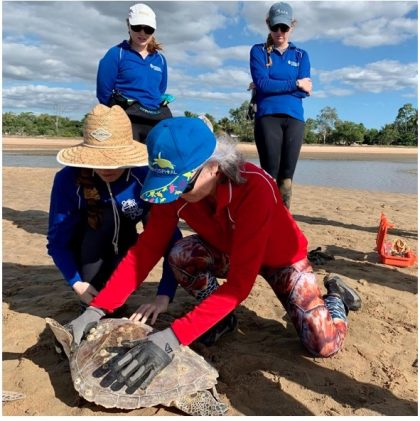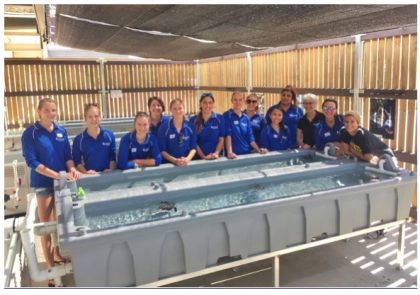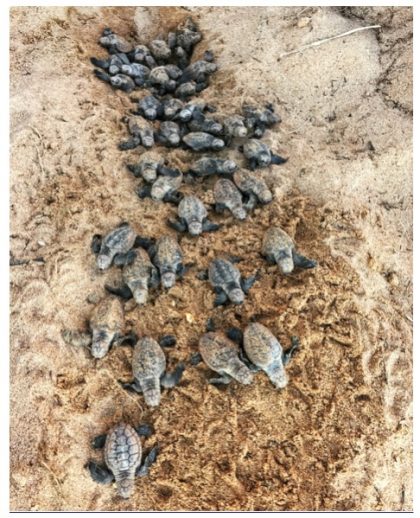
By Edith Shum: edith.shum@my.jcu.edu.au
I was introduced to the human dimension in conservation during my graduate studies in Australia, and was surprised to see how few management decisions integrate human relationships with nature. When it comes to maximizing and sustaining conservation efforts in today’s growing environmental concern, we must move beyond conventional approaches and consider how humans play a role in our natural environment.
For volunteers in particular, many conservation practices rely on their engagement to help achieve their goals. While the trend for volunteering increases, it has become more costly and time consuming for volunteer coordinators to train newcomers. Coupled with funding limitations – a common theme for many species, managers are under pressure to design more effective voluntary programs to increase volunteer recruitment and retention.
In the case of marine turtles – a species often identified as a global conservation success story with relatively high levels of engagement and public concern, what do we really know about the individuals who participate in protecting marine turtles?

With the support of inspiring scientists and turtle organisations in Queensland, I was able to conduct an exploratory analysis to help bridge the gap in our understanding of internal motives and values in engaging individuals for involvement. A questionnaire was designed to ask volunteers a specific series of statements that prompted their reasons for engaging in the conservation of marine turtles. Using a quantitative and qualitative approach, the results illustrate the benefit in organisations becoming more aware of how values alignment, social influence, the ability to learn, and optimism can encourage involvement in the conservation of marine turtles.
Specifically, we were able to highlight the following four implications for volunteering organisations:

- Setting clear goals: Is the mission of the organisation to release a certain number of turtles within a specific period of time? (Rehabilitation-driven) Or is it to reach a certain number of visitors by the end of the year? (Awareness-driven) Being more specific about your intended conservation goal will help volunteers know exactly what they are signing up for. When individuals see their values aligned with the organisation, it will keep them engaged, motivated and fulfilled when the desired goal is achieved.
- Foster a learning environment: Creating an environment that encourages volunteers to express their passion and further their skillset will make them want to tell their friends and family about the organisation as one that offers opportunities and praises involvement. By doing so, recruitment will broaden naturally and attract willing volunteers.
- Empower individuals: Show volunteers that they are making a difference, even if it is something small. For example, host social events to celebrate the number of nests surveyed in the season, or proudly showcase before and after photos of rehabilitation, and enlighten how much more is understood from their efforts. By recognising their achievements, organisations demonstrate a balance between optimism and realism that uplifts personal efficacy.
- Create a community: Demonstrate the importance of the conservation issue and how it is relevant to the area. Organisations that build a volunteer’s bond to a place beyond the physical entity by facilitating a sense of belonging to the community and wildlife will promote local environmental stewardship for collective action.

Although our findings are local in scale, we introduce a new narrative in understanding marine turtle volunteers by addressing how values alignment, social norms, knowledge and kinship, and optimism foster strong voluntary programs. With this information, we hope that organisations will apply what we have learnt to other critically vulnerable species, and to ask: How can we better integrate the human dimension in conservation to improve our chances of success?
For more information, please check out the full paper here: https://doi.org/10.1080/10871209.2021.2018737
Edith Shum, Claudia Benham, Karina Jones & Ellen Ariel (2021) Understanding people who volunteer with marine turtles: motives and values for engagement in conservation, Human Dimensions of Wildlife.

Fascinating work Edith. Thank you for sharing.